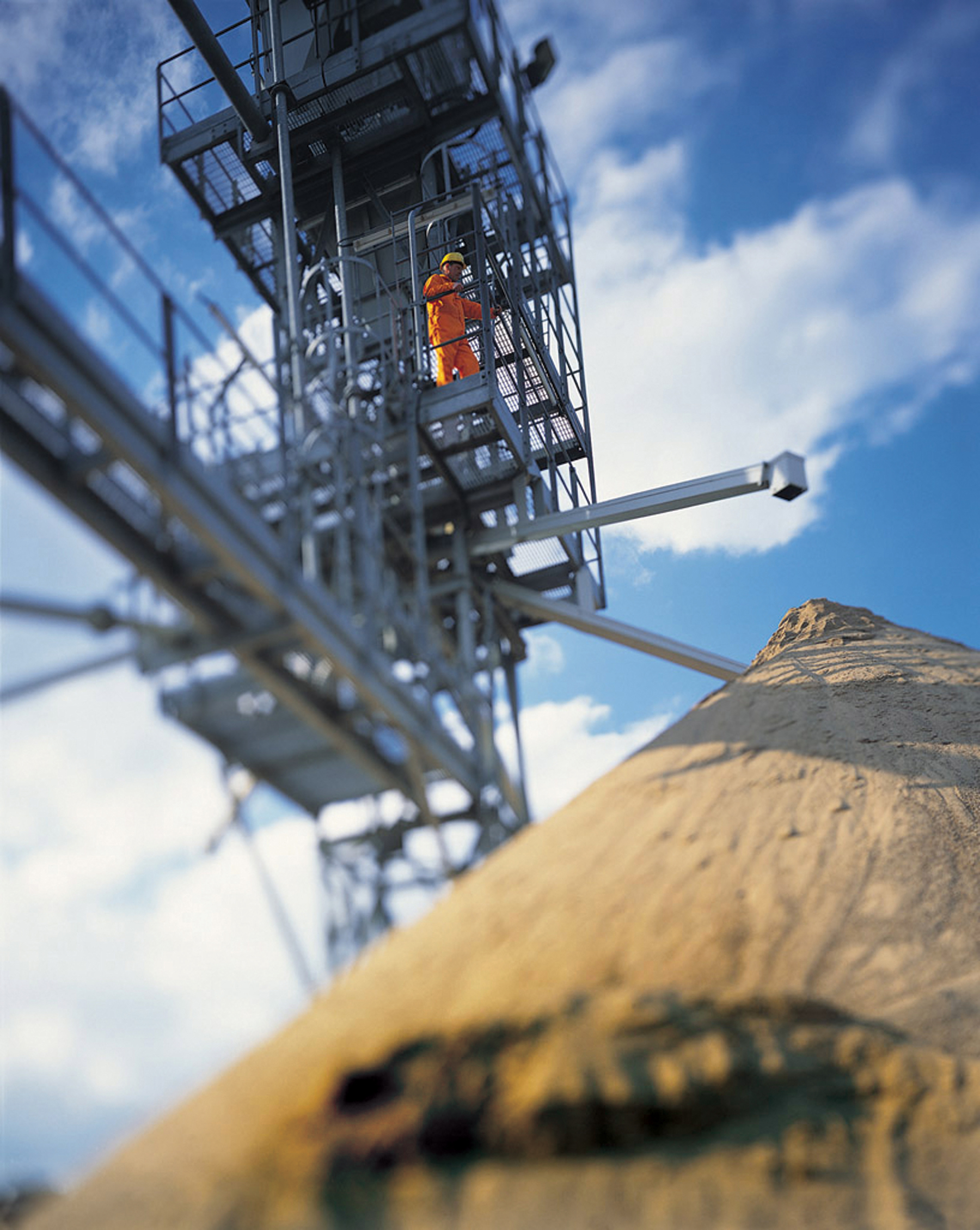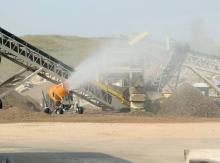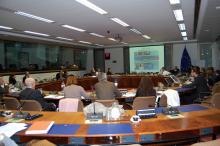
Exposure to Respirable Crystalline Silica (RCS) could, according to some, be as serious a threat as exposure to asbestos. Paul Howard finds out what's being done to reduce the risk
When the former president of the
"Exposure to respirable crystalline silica (RCS) could be as serious as asbestos if we didn't do anything about it," said Didier Audibert, just prior to leaving his role as UEPG president earlier this year. "People could be contaminated without knowing, and become ill or die simply for want of being aware of the risk or because people did nothing." Fortunately, however, Audibert and other enlightened individuals in the UEPG, as well as in national trade bodies and in various European institutions - not to mention more than a dozen other industries affected by exposure to RCS - have not been doing nothing. Instead, they first put into place a unique European agreement to set out the ways in which the level of risk should be assessed and exposure then monitored, and are now in the process of putting this agreement into effect.
The agreement, known as the 'Social Dialogue Agreement on Workers' Health Protection Through the Good Handling and Use of Crystalline Silica and Products Containing it' is not unique because it seeks to avoid the heavy hand of legislation (other social dialogue agreements exist in other sectors). It is unique because it unites 14 separate and disparate industries under one umbrella - and has still managed to avoid the need for European-wide regulation, and all the associated complexities.
"For a long time RCS has had a reputation as a dangerous material, so the industry created a panel of experts to tackle the problem and they decided the social dialogue agreement was the best way forward," explained Audibert. "Those involved in the industry as well as those at a European level realised that regulation might be a too heavy-handed approach and that this alternative system might be brought into effect more quickly and with more wide-reaching effect than a directive. It might also resolve the problem of national differences as sometimes happens following the adoption and enforcement of directives." According to Martin Isles, director of health and safety at the Quarry Products Association, the UK trade body, there were other reasons for wanting to avoid legislation.
"Any new legislation would likely have been under the auspices of the carcinogens directive, and the likely starting point for exposure limits would have been too low - no higher than half the current limit," he explained. "Yet where we are at the moment is comparable across most of Europe and also with Australia and the US. We don't need unnecessarily low limits to be able to protect the occupational health of workers, as the new reporting system and survey will show. Also, if the levels were too low, a half or a quarter of what they are now, there are some parts of the industry that couldn't operate, such as producers of silica flour, for which there is no alternative." Not that Audibert is particularly concerned about the impact of the current agreement on the way most of the industry in Europe will have to conduct its business. "It's not our industry that's the most exposed. I'm not really worried about the extent of any supplementary measures that those involved in the industry will have to take. They're already monitored by member states and mostly adopt best practice." Isles agreed that most major companies will not face a problem in measuring or in compliance.
"The industry has been aware for some time of the risks of both process dust, which you can capture or reduce, and fugitive dust, which can be reduced by measures such as avoiding down-pointing exhausts. In terms of practical steps, it's all based on a risk assessment," he continued. "First, determine if you're handling RCS. If yes, ascertain how many employees are affected. Then conduct a risk assessment to work out what best to do that's commensurate with this exposure." This three stage process highlights what will be the biggest immediate consequence of the new agreement: the completion, for the first time, of an in-depth survey into the situation in the industry across Europe, an integral part of the reporting process that underpins the agreement.
"We have given proof of our desire to find out how things stand and to take stock of the current situation and likely exposure levels," says Audibert. "This has never been done before but in 2007/2008 we'll have a complete picture and then be able to plan appropriate steps to take as measured against this reality that we find".Social Dialogue Agreement
The 'Social Dialogue Agreement on Workers' Health Protection Through the Good Handling and Use of Crystalline Silica and Products Containing it' will affect more than two million workers in 14 industries with a total contribution to the European economy exceeding €250billion. It includes both duties on employers and employees. It was signed on 25 April 2006 and came into force on the 1 October last year. Data will be reported every two years from May 2008, which means the industry should be in the process of measuring its exposure to RCS right now.
RCS Fact file
· Crystalline silica, the source of the noxious particles in RCS, is one of the most abundant minerals in the earth's crust. It is found in almost all types of rock, sands, clays, gravels and shales.
· If you want to get away from silica you'd have to move to another planet," said Isles
· The empirical formula of crystalline silica is SiO2
· Synonyms for crystalline silica include alpha-quartz, agate, chert, flint, crystalline silica, millstone, sandstone and silica flour.
· In its respirable form in quarries it is most likely to be simply known as dust.
The consequences of prolonged exposure to RCS:
According to the UK's Health and Safety Executive, particles of crystalline silica are harmful to the lungs. In particular, long term exposure to high levels of crystalline silica in respirable form can cause the lung disease silicosis which in turn can cause breathing problems. Severe cases can be very disabling and lead to death. Exposure to RCS can also cause an increased risk of lung cancer. Risks are incurred not just via inhalation but also absorption through the skin, ingestion and contact with the eyes.
on site protocol
· Carry out an initial risk assessment based on the results of personal dust exposure monitoring
· Implement good practices (collective/personal protection measures)
· Provide information, instruction and training to the workforce
· Organise health surveillance
· Monitor the application of the agreement & good practices
· Report to your company who, in turn, reports to the national industry body
Sequence of reporting:
· Site
· Company
· National association
· European association
· Agreement council
· European commission








